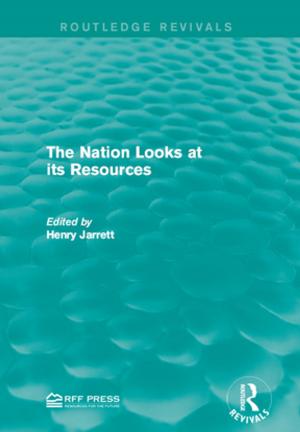Environmental Risk and the Press
Nonfiction, Art & Architecture, Architecture, Planning, Social & Cultural Studies, Political Science| Author: | ISBN: | 9781351317580 | |
| Publisher: | Taylor and Francis | Publication: | September 8, 2017 |
| Imprint: | Routledge | Language: | English |
| Author: | |
| ISBN: | 9781351317580 |
| Publisher: | Taylor and Francis |
| Publication: | September 8, 2017 |
| Imprint: | Routledge |
| Language: | English |
Toxic spills, acid rain, poor air quality-scarcely a day goes by without a report in the press on an environmental risk issue. Nowhere is this more prevalent than in New Jersey, a leading state in the production of chemicals, and the state with the largest number of Superfund cleanup sites. How accurate and how extensive is environmental risk reporting in the New Jersey press, and what can be done to improve the quality of its coverage of environmental risk? And what can we learn from the New Jersey experience?Environmental Risk and the Press sets out to answer these questions. The authors explore the strengths and weaknesses of environmental risk reporting in New Jersey by evaluating the state's best environmental risk stories. They find that even the best stories have a number of problems, and they develop a number of concrete recommendations for reporters and editors on how to improve their coverage in this area.The authors also investigate the feasibility of various methods for getting environmental risk information to reporters and into their newspapers. They recommend three ways to improve the quality of environmental risk information available to journalists. The first is nationwide distribution of environmental press kits that include a directory of news sources, a glossary of technical terms, and briefings by experts on strategies for covering particular types of environmental risk situations. The second is continuing education programs on environmental risk for reporters and editors. The third is creating collections of relevant reference books in the offices of newspapers and broadcast stations. The authors report on initial actions taken to implement these recommendations, and plans for others. They conclude that the broader availability of environmental risk information to the media will result in better reporting of environmental problems. This book is a first step toward enhancing journalists' appreciation of the importance of risk as an issue in environmental news coverage, and providing them with the tools to help them act upon that heightened awareness.
Toxic spills, acid rain, poor air quality-scarcely a day goes by without a report in the press on an environmental risk issue. Nowhere is this more prevalent than in New Jersey, a leading state in the production of chemicals, and the state with the largest number of Superfund cleanup sites. How accurate and how extensive is environmental risk reporting in the New Jersey press, and what can be done to improve the quality of its coverage of environmental risk? And what can we learn from the New Jersey experience?Environmental Risk and the Press sets out to answer these questions. The authors explore the strengths and weaknesses of environmental risk reporting in New Jersey by evaluating the state's best environmental risk stories. They find that even the best stories have a number of problems, and they develop a number of concrete recommendations for reporters and editors on how to improve their coverage in this area.The authors also investigate the feasibility of various methods for getting environmental risk information to reporters and into their newspapers. They recommend three ways to improve the quality of environmental risk information available to journalists. The first is nationwide distribution of environmental press kits that include a directory of news sources, a glossary of technical terms, and briefings by experts on strategies for covering particular types of environmental risk situations. The second is continuing education programs on environmental risk for reporters and editors. The third is creating collections of relevant reference books in the offices of newspapers and broadcast stations. The authors report on initial actions taken to implement these recommendations, and plans for others. They conclude that the broader availability of environmental risk information to the media will result in better reporting of environmental problems. This book is a first step toward enhancing journalists' appreciation of the importance of risk as an issue in environmental news coverage, and providing them with the tools to help them act upon that heightened awareness.















